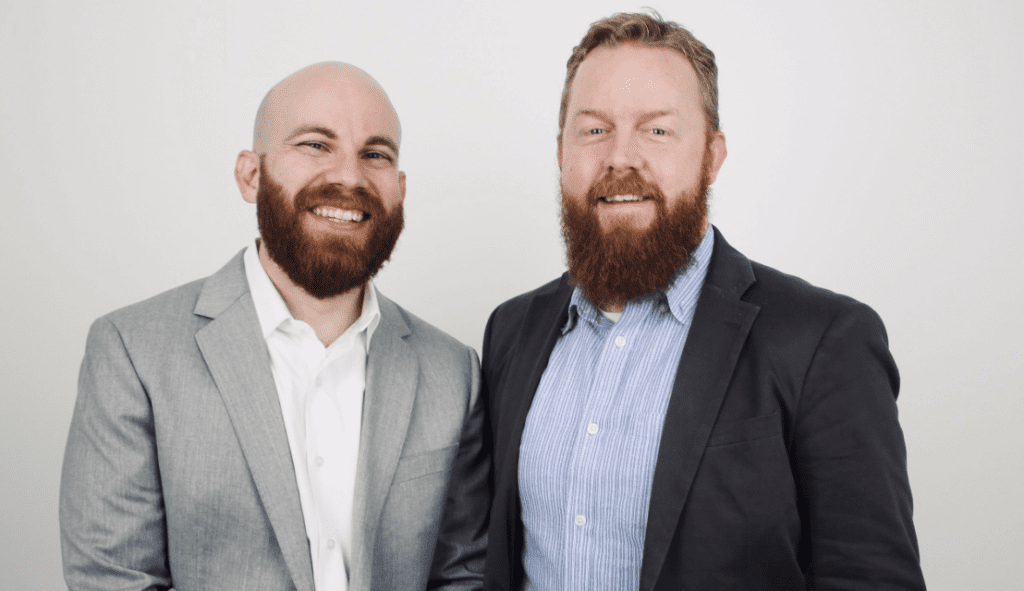
We’re proud to offer several lessons we’ve learned through the roller-coaster experience of starting a software company. Part 1 offered the first six of these, from Innovation is NOT Just “Do The Same Things Faster” to “Seek Out Advisors and Mentors Who Have Been There”.
But there’s so much more we’ve discovered in this journey. Here are several more Lessons Learned from Starting a Software Company:
7. Simplify, Simplify
Often, problems emerge because of ineffective communications and incorrect assumptions. If you assume that the other party knows a lot, or has the same background as you, you’ll automatically jump to certain conclusions.
Because you have a certain knowledge base, you take a lot for granted. When you take ideas for granted, you don’t stop to question whether those assumptions are still warranted. However, when you step away from your insider knowledge and have to explain it to someone without that same level of domain expertise, you have to break it down into much simpler terms. This process of making your communications simpler can expose many of those assumptions you’ve been acting on.

You need to make your message as simple as you can. Being simple means it’s understandable and actionable. Also, distilling a message helps you eliminate much of the chance for misinterpretation. Which will lead to greater trust in your work from your audience, easier acceptance of your recommendations, faster decision-making, and ultimately a greater return on the investment in your initiatives.
8. Focus on Outcomes and Decisions, Not Just Data and Formulas
It’s easy for actuaries to concentrate on the data integrity and the specific algorithms that are components of a model or a database. For good reason: that’s how they trained and where most of their comfort lies. As a result, many actuaries tend to put a lot of emphasis on improving precision, without understanding how their work is going to improve accuracy.
However, this misses the whole point of having a model. There is some business purpose to building, maintaining, and optimizing that model, and it’s probably not just getting a slightly smaller variance in the forward lapse rate projection each month.
There are decisions being made based on those models. Real, timely, and business-impacting decisions are often made based on the results of that model.
In fact, we wrote a whole blog post about this. (The Solution Is Not the Math)
The point is, don’t get so enamored with precision or getting something just so that you forget why you’re working on the thing anyway.
Software development cycles need to lead to improved user experience, company growth, or reduced risk of failure. Those are outcomes, and they’re the fundamental reasons for doing the work.
In the same way, your model improvements and innovation initiatives should lead to better business decisions. If you can’t point towards improvements, either in efficiency, reduced risk of substantial mistake, or reduced costs, then it’s likely your focus is on the wrong things. And it’s not a good use of your time.
Reflect on why you’re doing what you’re doing, and ensure that your work aligns with improving the decisions and outcomes that are based on the model, not just refining data or formulas for the sake of “doing something”.
9. It’s Not About the Math, It’s About User Experience
Let’s expand on that idea a little bit. SLOPE got its start because of poor user experience. So one of the central tenets of our development is that we want everything to be easy for the user to do.
Because if it’s easy, they’ll probably do it. If it’s hard, they’ll find ways not to do it, and if they’re not using it, it’s not worth it to them.
This is important because any innovation or transformation project must ultimately be used if it’s going to be valuable. The biggest roadblock to use by the intended parties is, in fact, poor user experience. That can come in many forms: office politics, copious levels of gatekeeping, or just really arcane setups when it comes to getting approval to make a change that you know is valuable.
The gist is that if you are pursuing transformation or innovation, remember to keep the end user experience in mind. It doesn’t do much good to add new tools or workflows, for example, if nobody remembers how to access them and can’t really do what they want on the off chance they actually get there. Such roadblocks are going to lead to significantly lower adoption of those innovation efforts, and a correspondingly lower return on investment.
Unfortunately, that poor return compounds into lowered appetite for future innovation initiatives. Which defeats the purpose, because the whole point of innovations is to make the world, or your company, or your department, better. If you’re not advancing towards something more useful, you’re just wasting everyone’s time.
Make sure you keep in mind the users who come after you, and those who come after them, at the top of mind whenever you build, deploy, and maintain whatever solution you decide on.
10. Build Good Habits Early
At first, Slope was just two guys working intimately together on nights and weekends to build something to solve a problem. With such a small team, it would be easy to just keep throwing ideas into the pot as soon as you thought of them. Who needs a process when everyone is working on every part all the time and knows every decision intimately? That’s just going to slow you down, right?
However, one of the essential elements to Slope’s continued success has been Taylor’s insistence on effective controls from the start. Taylor introduced DevOps (development operations) ideas such as rapid feedback, continuous testing, and incremental improvement.
Such high standards might seem like overkill when there’s just two people, but the advantage has been monumental when scaling up the company. As new employees have joined the team, they have been able to be very effective immediately, without the unfounded assumption that they will just be able to work well.
Now, we’re not saying that you need to get Agile certified in order to improve your actuarial processes. (Though we do believe agile work is the future for actuaries.) We are, however, saying that if you want to do it well, and you want to grow the group that’s doing the same work, it’s better to start with effective processes and controls from the outset. That way, it’s very easy for new entrants to add value while minimizing the time on the learning curve.
11. You Still Have To Sell Your Solution
As much as SLOPE might be the best modern actuarial software on the market, when it first became available, nobody knew about it. So Andy and Taylor and the growing team needed to sell their solution. Which involved learning how to talk to other people, to draw out their problems, and to demonstrate how the SLOPE solution actually solved those problems.

Sales is not a traditional skill set for actuaries or IT professionals. You’re often asked a question, and just trusted that the answer is what it is supposed to be.
But when it comes to convincing someone to make a change and disrupt their processes, that person must believe that the future state is worth the transition costs. That’s where the skill of selling comes in.
In a startup, developing an effective sales strategy involves a lot of trial and error. You need to be able to pivot messages and tactics depending on how well your solution meets the market’s desires, how your competitors are adapting to your entrance, and what new pressures are arising because of external economic factors.
You’ll have to convince them to take some risks. To try something new. You’ll have to convince people to move away from what they’re doing right now, even though they’re comfortable with the status quo.
Don’t give up if they hesitate the first time. If your innovation truly is better for them, you’ll get there. Remember that trial and adaptation is the best way to evolve your message towards success, and stay persistent.
12. Always Be Iterating
One key principle in entrepreneurship and innovation is the idea of a minimum viable product (MVP). This is the simplest thing that you can build and then test with users to see if you’re moving in the right direction.
From that MVP, you begin iterating. Improve a component or feature, check with the users for feedback, and repeat.
While the desire to be “fully functional” is admirable, it also slows down the development process. And it introduces a significant risk of rendering vast amounts of work unusable due to misunderstood requirements or incorrect assumptions.
Instead, introducing an MVP as the barest minimum deliverable gives end-users much earlier feedback into the process. They can point out where the MVP falls short of the goals, so that the next iterations can make necessary improvements.
Heck, NASA knows this. Fixing errors discovered in the implementation and operations phase of a project can be a hundred to a thousand times more “costly” than those discovered much earlier, during requirements development. Why should it be any different for actuarial projects? Fast feedback helps catch those deviations from the ideal sooner, fixing them sooner. And delivering the final product sooner.
This only comes about if you view the project as delivered in increments, not in one big dump. That may require a mindset change. So be it. It’s necessary. And worth it.
13. Stay Curious
This is the ultimate lesson and wisdom to share with anyone in the audience. Stay curious about the world around you, the tasks on your plate, and the opportunities before you.
Remember, you don’t know what you don’t know. You don’t have all the skill sets necessary to solve every problem. And your ideas of what you want to do are often biased by what you’ve already been doing.
None of those are going to help you make the new thing out of nothing. Staying curious will allow you to explore disciplines or domains that you might never have thought of otherwise.
Ask “Why?” so many times that people start answering before you even get the chance to ask. You’ll discover elements that astound you about the way things have always been done.
And you’ll likely be so inspired to change them, that nothing can stand in your way.
Good luck. You can do it. We believe in you.
If you’re inspired by this article and would like to set up time to chat, we’re always here to help.

